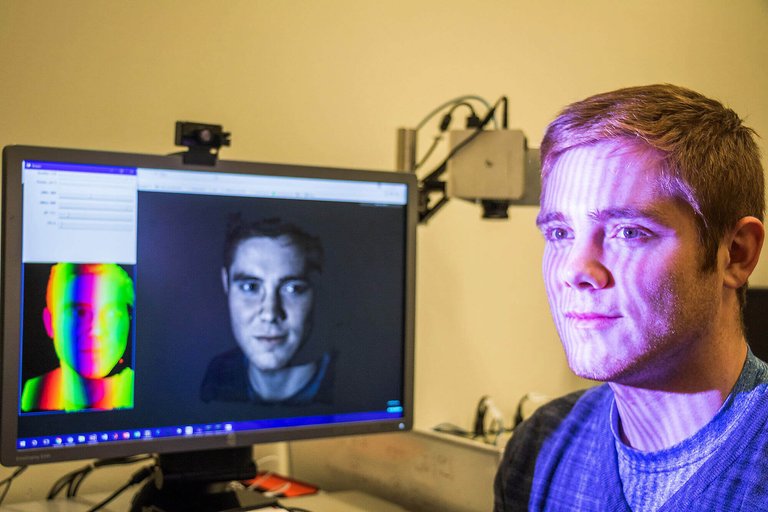Scientists have shown the first platform that allows real-time streaming of 3D images. You don’t need a hologram to view it, a 2D display can be used as well. Possible uses include not only communication but also other fields.

Tyler Bell - Source: Purdue University image/ Trevor Mahlmann
The Purdue University has shown a new project created by Tyler Bell, one of their students, who has in cooperation with other students and scientist created Holostream. Holostream is the first platform capable of transmitting 3D images in real time and showing them to another party on a regular mobile device. The platform has a big potential not only in communication but also for example in remote surgery performed by robots, virtual reality and much more. Scanning and recording in 3D is a field that has been used professionally for a decently long time but when it comes to mainstream usage it’s only starting to take place. One of the first mainstream uses has been the Microsoft Kinect which was used for gaming. And even if the Kinect has failed we are starting to see 3D scanning take place with facial recognition (Face ID) and cheap cameras capable of scanning an object in 3D coming to the market. But until now there wasn’t a platform capable of connecting the scanning with showing the scanned content in real time.
Source: Purdue University Mechanical Engineering
Holostream is a platform that doesn’t concern itself with the development of either the scanning devices or to projecting devices. It’s all about effective data compression in real time so the scanned images can be sent in real time and so the images the receiving party sees make sense. As mentioned before, this could be communication but also many other things. A 3D image of a heart in surgery, showing a broken machine to an expert on the other side of the Earth, real-time education of students around the globe showing of dangerous environments without endangering them. The only problem remaining is the fact that you need really fast internet as the amount of data sent is obviously much higher than when transmitting a 2D image. This is why Holostream has several different streaming profiles, each using different compression. If you just want to chat with your spouse, you will probably be okay with lower resolution and higher data compression but if you are performing heart surgery you will definitely want to use the maximum resolution with lossless compression. Holostream’s new compression systems bring pretty incredible data savings as the highest compression uses 1 602 times fewer data than current data usage. But even with this compression, you will still get 30 frames per second.
Sources:
Didn't hear about that before, thanks for sharing! I think technologies like that can open the path for completely new ideas, imagine streaming your own face in a game as the head of a 3D character! I hope we'll see some things using this technique arising in the future.
That's so cool. Thanks for sharing @scisteem it would be neat to develop this along with 3D printing to the point where you can simply send a picture in 3D then print that same image in 3D!
Thanx for the share. Didn’t know it was out there. Application need to set and tested, trial runs and such. Is it available publicly yet?